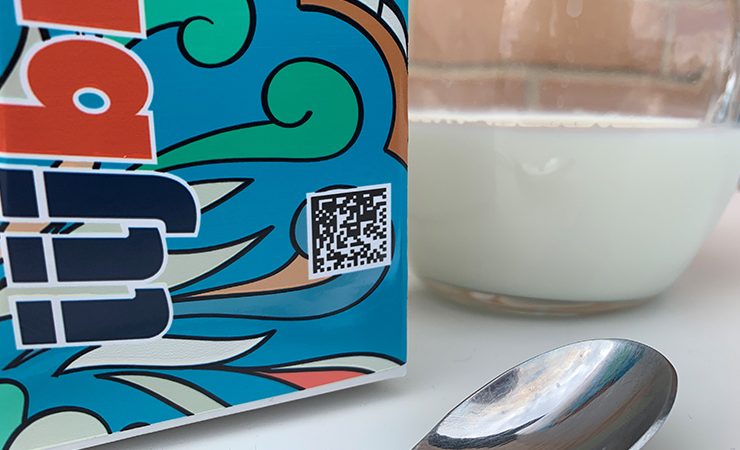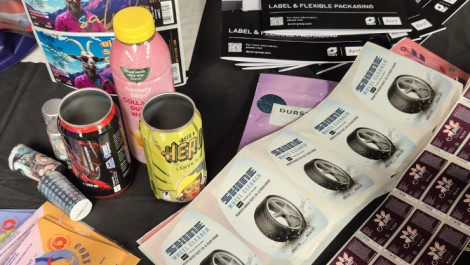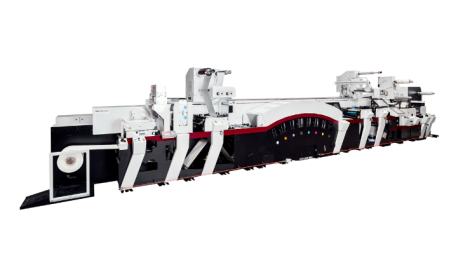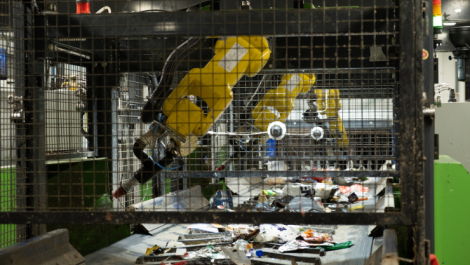There is something of a panic going on right now in the inkjet industry, fuelled by Russia’s Chestny Znak national digital track and trace system.
Otherwise known as the country’s honesty mark scheme, this has been introduced as a means to tackle counterfeiting and is being talked about as the world’s most ambitious – and strictest – supply chain track and trace system.
As John Corrall, managing director at Industrial Inkjet (IIJ), advises, ‘This could well be the start of a major shift in how countries will use digital print technology, and therefore in the opportunities for equipment suppliers.
‘Many years ago,’ he regales, ‘the nascent inkjet industry was given real purpose by the introduction of ‘best before dates’ on perishable items. ‘Best before’ or ‘use-by’ date codes were supposedly invented by Al Capone’s brother, Ralph, in the 1930s in Chicago, when he persuaded milk suppliers to stamp a date onto their products after a relative became sick from drinking spoiled milk.
‘Marks and Spencer in the UK put such dates on products on its shelves from 1973, but the big change was when the requirement became law in the EU with Directive 79/112 in 1979. Once it became law, the food packaging industry had no choice but to find a technical solution to printing a variable date code. Overnight a large captive market for continuous inkjet date code print systems was created, and companies like Domino, Videojet and Imaje grew rapidly as they met the need.
Something similar happened with track and trace codes on pharma products, but most of the other opportunities for inkjet technology over the last 30 years have not had it so easy. Where the requirement is fixed by law then the market has no choice, and will buy whatever they need to get the job done. However, any application that is not enforced will always be subject to normal market forces, namely who wants it and what are they willing to pay.
‘Timescales for adoption are then measured in years. Typically, penetration into a new market crawls along slowly for a long time until suddenly the whole market accepts the technology as proven and changes over en masse.’
Ceramic tiles are an example that Mr Corrall draws attention to. Tile production suddenly changed over to inkjet around 2008, which may well have been furthered by the global economic crash at the time, in addition to the realisation that inkjet was both mature enough for volume production and cost-effective as a production tool.
How does this relate to what is currently going on in Russia? ‘Chestny Znak is a Russian state regulation that is forcing the adoption of digital print technology,’ confirms Mr Corrall.
‘Chestny Znak is similar to pharmaceuticals in that a unique track and trace code (datamatrix) is applied to each product or its packaging. The Russian state is in the process of enforcing such coding on a very wide range of products, from the obvious such as tobacco and perfume, to the slightly more esoteric such as flashbulbs and wheelchairs. The name of the scheme suggests that the goal is to prevent counterfeiting but a number of commentators see it as a form of taxation – not much different to tax stamps on alcohol or cigarettes. After all most countries apply excise to spirits and tobacco.
‘The particular product range that is causing a lot of the commotion in the inkjet industry is dairy produce. Just as an example, about 7.2 million metric tonnes of milk is consumed in Russia each year, which would need 7.2 billion one-litre containers and the same number of individual barcodes. Then there is cheese, butter and yoghurt to worry about.
‘Unlike tobacco and alcohol, the dairy industry hasn’t a track record of buying excise stamps and is having to move fast if it wants to adapt to the new requirements. If it doesn’t, then it simply can’t sell its products any more. Depending on the shelf life of the dairy product, the code has to be in place on each product by 1 September or 1 December this year, with cheese and ice cream scheduled to begin even earlier, as of 1 June, 2021.’
Practical implications
The reality of this system means a brand owner has to register with the Russian state and will need to install a PC-based print server package on their line. This package will supply a block of codes to the print system, either laser or inkjet. The codes are then printed and a camera on the line will record that a code has been used and the brand owner will be invoiced accordingly. The price for one code is about 50 copecks ($0.7 cents).
Whilst that sounds reasonably easy to implement, there are technical challenges to be met, as Mr Corrall details.
‘There is quite a lot of variable data to be encoded into the barcode – up to 45 characters. At the same time the code may need to be printed small – remember this code is probably getting squeezed into an existing product artwork. Yoghurt pot lids would be a good example of a product with little real-estate area available. A 24 x 24 element datamatrix printed say 14 x 14mm square means that each element is less than 0.6 x 0.6mm. Given that the specification calls for ‘A’ grade barcodes to be printed, there is going to be a lot of pressure to use high resolution systems. At least 600dpi will be needed for many applications.
‘The media to be printed might not be very friendly either. On paper-based laminated board for cartons, it might well be possible to print nice barcodes on the inner paper layer before overlaminating, but inevitably the manufacturing people will want to add the code at as late a stage as possible. That means printing onto the outer layer – usually polyethylene –, which requires solvent or UV-cured inks. If UV ink, the ink will need to be rated for accidental food contact, and the brand owner will need to carry out migration tests and prove that printed samples meet regulatory requirements.
‘Then there is the line speed to consider. Looking at cartons for drinks, the obvious place to add the coding system is just before the roll material is cut into individual cartons, at the creaser/cutter stage. But line speeds are still quite high at that point, perhaps 300m/min and sometimes more. The customer may well want to run at a wide range of different line speeds for different board materials, and will want to continue to print as the system slows right down for a reel change. So the setup has got to be robust enough to cope with both the huge change in speed but also a significant change in the web tension and hence the stretch of the material.’
In addition to the specific needs of Chestny Znak printing, there are the usual challenges of adapting inkjet to an existing production line. Web wander/swim, vibrations, and variations in the media thickness must all be factored in, as well as ensuring print quality is being adequately monitored and controlled.
‘So there’s lots of work,’ states Mr Corrall, adding, ‘For anyone whose digital print system is not already installed and running, there is now massive time pressure and significant technical risk. But for the digital print equipment suppliers this may well be the kind of significant opportunity that happens perhaps only once or twice in a generation. It’s definitely an opportunity not to be missed.
‘Russia has taken the lead, but inevitably other countries will follow. Perhaps we are now entering the era of ‘excise on everything’,’ he concludes.
This article was published in the May/June 2021 issue of Digital Labels & Packaging, which you can also read online here






